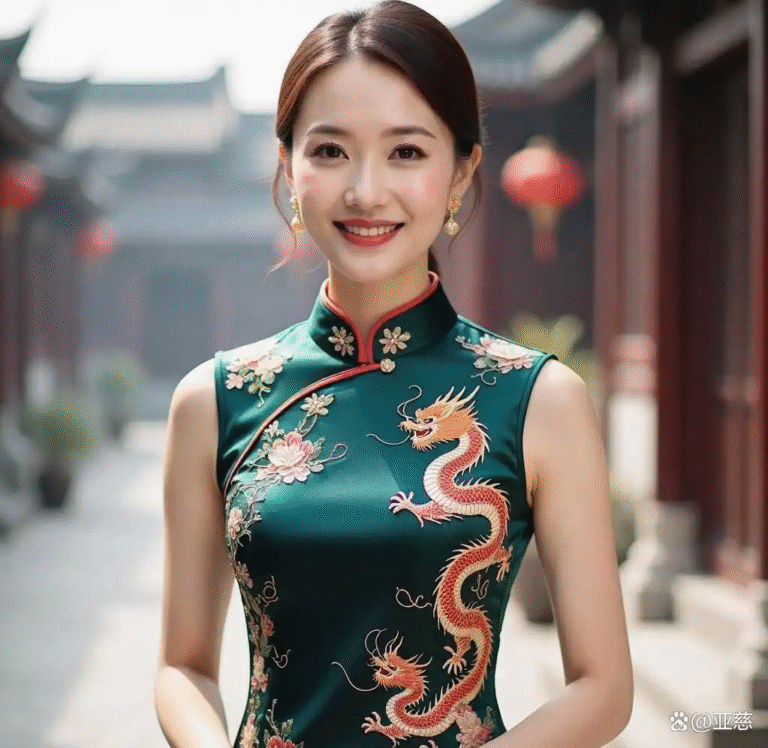What is Cloaks
Cloaks (Chinese: dǒupeng) is a hooded, sleeveless garment also known as “lotus coat” or “wrap-around cloak”. This traditional clothing serves both practical and fashion purposes, with shorter versions called “pelisse” and longer ones simply termed capes in ancient China. Unlike jackets, cloaks feature:
- Sleeveless design for full arm movement
- Rounded silhouette that wraps the body
- Thick fabric ideal for cold protection
How cloaks Differ from Shawls:
- Design: Cloaks have integrated hoods and smooth lines, while ponchos (Chinese: pengfeng) feature:
- Pointed collars
- Long sleeves with side slits
- More structured fit
2. Usage:
- Cloaks excel at outdoor winter use (think snowy scenes in period dramas)
- Shawls work for both indoor/outdoor wear, like in Ming Dynasty casual wear or classic novels like “Dream of Red Mansions”
3. Cultural Image:
- Capes convey carefree elegance
- Shawls carry refined sophistication, often worn by high-status characters in TV adaptations
What is the function of cloaks?
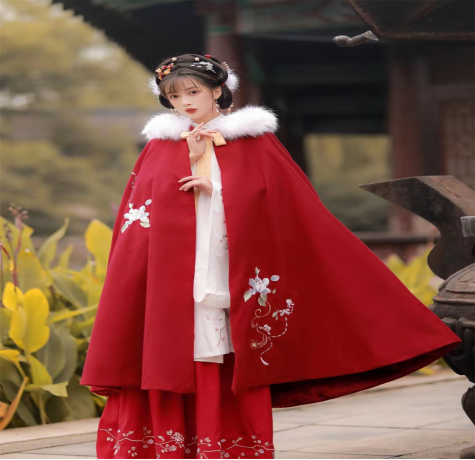
In ancient times,cloaks was commonly referred to as a “walking protective cover.” Literally,cloaks fits tightly around the wearer like a hood, which is extremely convenient to put on and take off. The cloak’s utility extends beyond just protection and warmth.
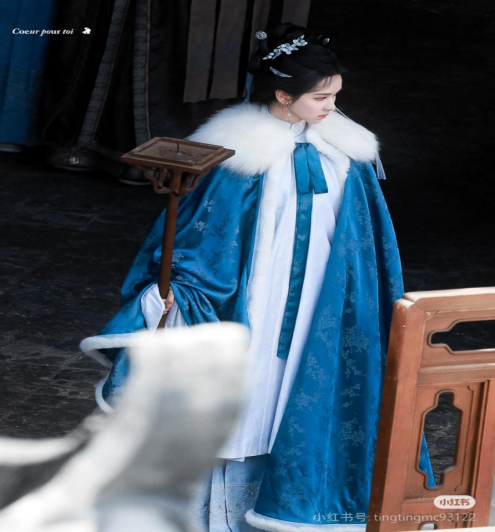
In ancient times,cloaks was an important symbol of status and aesthetics. Wearing cloaks gives one a floating sensation, adding a touch of tranquility and vividness, The temperament also suddenly becomes advanced. Many people choose cloaks when matching Hanfu clothing, as the combination of cloaks and Hanfu offers different visual and sensory experiences. This style of dressing has become a common choice for many when selecting Hanfu, show casing the aesthetic power of ancient cloaks. So, what other charms do cloaks possess?

The appearance of ancient cloaks
A typical feature of ancient cloaks is their sleeveless, open-fronted design, connected by ties at the front and back. The wide hem covers the entire body. What adds to the charm of cloaks are their double-layered edges, which not only prevent wear but also add a sense of layering. Higher-end cloaks often have fur at the collar for added warmth or a detachable fur trim. In cold winters, this can be used; in mild spring and autumn, cloaks made of thin silk can be worn to suit the changing weather.
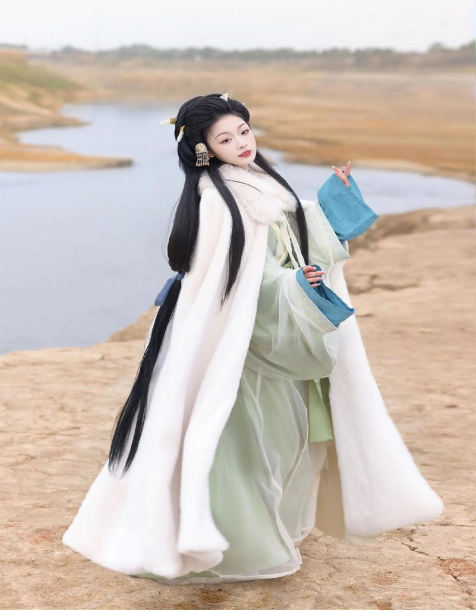
The cloaks of the Qin and Han Dynasties
The forms of cloaks evolved through the ages, developing into various styles. During the Qin and Han dynasties, cloaks were mostly straight-筒形, reaching the knees, primarily serving as warm clothing for soldiers on marches. By the Northern and Southern Dynasties, influenced by nomadic and central Asian cultures, hooded cloaks emerged. This design can not only withstand wind and sand, but also gradually became a common clothing form among both nobles and civilians. As a result, people’s winter warm clothing has become more abundant.
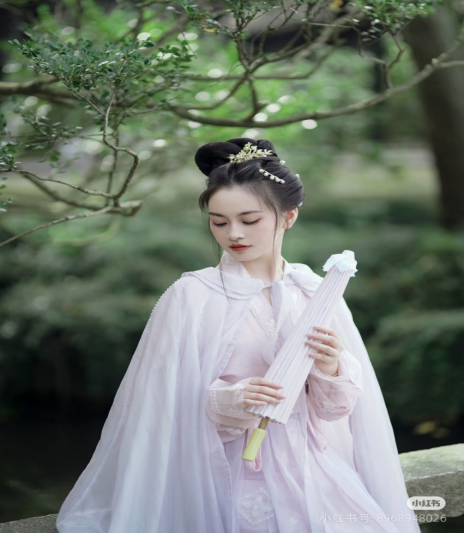
Cloaks in the Tang and Song Dynasties
By the Tang and Song dynasties, cloaks became objects of pursuit among scholars and elegant figures, no longer just for warmth. They were refined and made more beautiful, becoming fashion items that embodied extreme aesthetics and fashion trends.
Cloaks in the Ming and Qing Dynasties
During the Ming and Qing dynasties, cloak styles diversified. Nobles often embroidered various auspicious patterns and floral and bird motifs on cloaks. Cloaks spread more widely among the common people, gradually becoming a manifestation of social class distinctions. However, their unique design styles and decorative functions had integrated into the entire Hanfu system, playing an important role in traditional clothing.
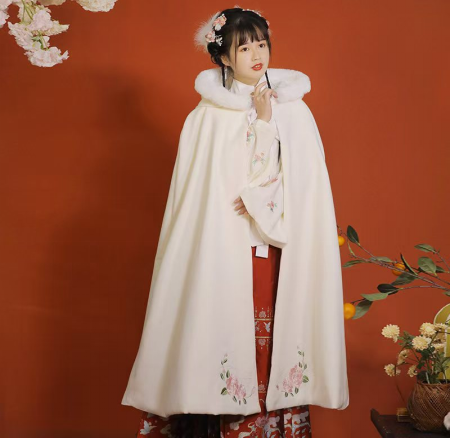
What is the significance of cloaks?
The clothing components of cloaks are based on pragmatism, yet over the centuries, they have become a significant part of China’s clothing culture under the influence of great wisdom and unique culture. In them, one can see people’s good wishes and aesthetic symbols materialized.
Nowadays, many garments draw inspiration and elements from cloaks, continuously creating clothing suitable for modern aesthetics and dressing needs. The blending of ancient and modern styles leads to innovative development, and the trend of national fashion has sparked a wave of traditional tracing enthusiasm. Cloaks, as traditional clothing, are slowly re-emerging in modern fashion transformations, with their vitality growing stronger. Cloaks are undergoing a new era of clothing aesthetic reshape, moving beyond just being present in classical historical records and figure paintings. The Chinese clothing civilization contained in ancient cloaks has always been our precious thousand-year wisdom. It is beautiful and has such unique cultural connotations.






